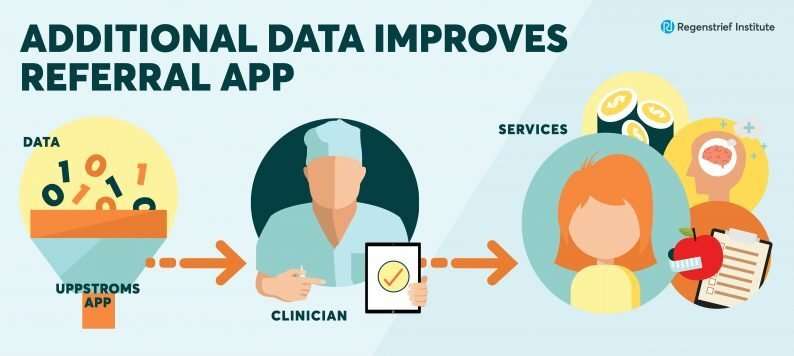
Research scientists from Regenstrief Institute and Indiana University have further improved the performance of Uppstroms, a machine learning application that identifies patients who may need referrals to wraparound services, by incorporating additional personal and population-level data sources and advanced analytical approaches.
Research team affiliations include Regenstrief, IU Fairbanks School of Public Health at IUPUI, IU School of Medicine and Eskenazi Health.
Uppstroms has been in use at nine clinics associated with a safety net hospital in Indianapolis. The algorithm identifies primary care patients with social risks such as behavioral health or struggles with food or housing. This allows clinicians to offer these patients referrals to specialized services such as a dietician, behavioral health or a social worker, with the goal of addressing the need before it turns into a crisis.
Evidence suggests that at least one in four adults, and possibly as many as one in two, have a need driven by social determinants of health.
“These wraparound services can enhance primary care delivery by addressing socioeconomic, behavioral and financial needs that cannot be addressed by primary care providers,” said Suranga Kasthurirathne, Ph.D., first author on the paper, Regenstrief research scientist and assistant professor of pediatrics at IU School of Medicine. “To make it more useful in the clinical setting, we incorporated a wide spectrum of patient-level data and more granular population health data to improve the precision of the app, leading to fewer false positives.”
Innovations to prior approaches
Additional data added to the algorithm included patient-level social determinants of health, insurance, medication history and behavioral health history. These data came from Eskenazi Health’s electronic health record system and the Indiana Network for Patient Care, which is managed by the Indiana Health Information Exchange. Population-level social determinants of health measured at census-tract area, which is smaller than the area encompassed by a zip code, were derived from the U.S. Census Bureau, the Marion County Public Health Department and community health surveys.
The research team assessed the new decision models and found that they outperformed previous models. The new patient-level data and advanced analytical approaches played a key role in improving the precision.
“So much of what affects health happens outside of a doctor’s office,” said senior author Joshua R. Vest, Ph.D., MPH, Regenstrief research scientist and professor and director of the Center for Health Policy at IU Fairbanks School of Public Health at IUPUI. “Health systems are working to integrate those social determinants of health into the EHR. This study shows the benefit of capturing social factors in the EHR during clinical visits and leveraging them for clinical decision making.”
In addition to the added data elements, the study team adapted the application to be vendor neutral, meaning it can be implemented into any electronic health record system.
The next steps for the researchers are to develop a way to harness unstructured data in the EHR and include it in the algorithm.
Source: Read Full Article
